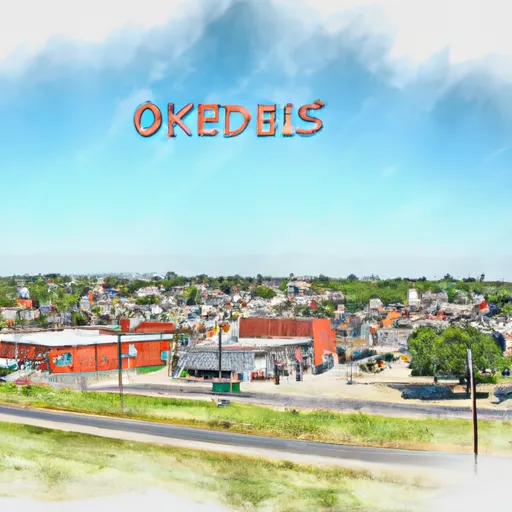-
 Snoflo Premium
Snoflo Premium
Get unlimited access to all our content
With no Ad interruptions! - Start Your Free Trial Login with existing account
Oneida
Eden Index
Climate
8.1
•
Recreation
2.6
•
Community
•
Safeguard
4.1/10

What is the Eden Index?
The Snoflo Eden Index serves as a comprehensive rating system for regions, evaluating their desirability through a holistic assessment of climate health, outdoor recreation opportunities, and natural disaster risk, acknowledging the profound impact of these factors on livability and well-being.
Climate Health Indicator (CHI): 8.1
Oneida receives approximately
853mm of rain per year,
with humidity levels near 84%
and air temperatures averaging around
12°C.
Oneida has a plant hardyness factor of
5, meaning
plants and agriculture in this region thrive during a short period during spring and early summer. Most
plants will die off during the colder winter months.
By considering the ideal temperature range, reliable water supplies, clean air, and stable seasonal rain or snowpacks, the Climate Health Indicator (CHI) underscores the significance of a healthy climate as the foundation for quality living.
A healthy climate is paramount for ensuring a high quality of life and livability in a region, fostering both physical well-being and environmental harmony. This can be characterized by ideal temperatures, reliable access to water supplies, clean air, and consistent seasonal rain or snowpacks.
Weather Forecast
Streamflow Conditions
Missouri-Nishnabotna
Area Rivers
Missouri-Nishnabotna
Snowpack Depths
Missouri-Nishnabotna
Reservoir Storage Capacity
Missouri-Nishnabotna
Groundwater Levels
Recreational Opportunity Index (ROI): 2.6
The Recreational Opportunity Index (ROI) recognizes the value of outdoor recreational options, such as parks, hiking trails, camping sites, and fishing spots, while acknowledging that climate plays a pivotal role in ensuring the comfort and consistency of these experiences.
Access to outdoor recreational opportunities, encompassing activities such as parks, hiking, camping, and fishing, is crucial for overall well-being, and the climate plays a pivotal role in enabling and enhancing these experiences, ensuring that individuals can engage in nature-based activities comfortably and consistently.
Camping Areas
| Campground | Campsites | Reservations | Toilets | Showers | Elevation |
|---|---|---|---|---|---|
| Arrow Rock - Melvern Reservoir | None | 1,087 ft | |||
| Redmond Cove South - John Redmond Reservoir | None | 1,054 ft | |||
| Eisenhower State Park | 230 | 1,082 ft | |||
| Riverside East - John Redmond Reservoir | None | 1,081 ft | |||
| Redmond Cove North - John Redmond Reservoir | None | 1,045 ft | |||
| Hickory Creek East - John Redmond Reservoir | None | 1,050 ft | |||
| Sun Dance - Melvern Lake | None | 1,079 ft | |||
| Turkey Point - Melvern Lake | None | 1,075 ft | |||
| Hickory Creek West - John Redmond Reservoir | None | 1,047 ft | |||
| Kelley City Park | None | 1,026 ft |
Catastrophe Safeguard Index (CSI):
The Catastrophe Safeguard Index (CSI) recognizes that natural disaster risk, encompassing floods, fires, hurricanes, and tornadoes, can drastically affect safety and the overall appeal of an area.
The level of natural disaster risk in a region significantly affects safety and the overall livability, with climate change amplifying these risks by potentially increasing the frequency and intensity of events like floods, fires, hurricanes, and tornadoes, thereby posing substantial challenges to community resilience and well-being.
Community Resilience Indicator (CRI):
The Community Resilience Indicator (CRI) recognizes that education, healthcare, and socioeconomics are crucial to the well-being of a region. The CRI acknowledges the profound impact of these elements on residents' overall quality of life. By evaluating educational resources, healthcare accessibility, and economic inclusivity, the index captures the essential aspects that contribute to a thriving community, fostering resident satisfaction, equity, and social cohesion.

